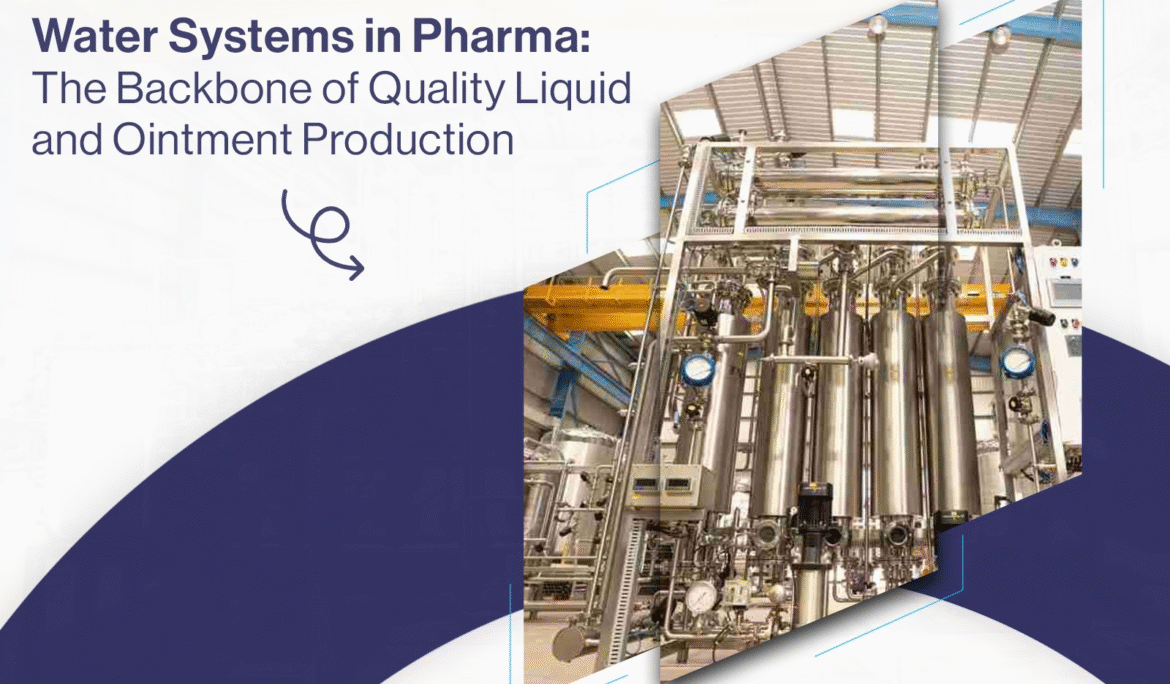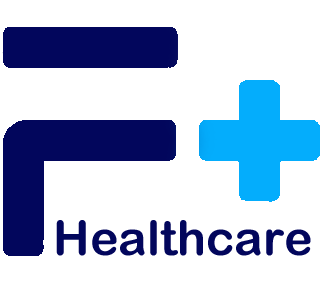Water Systems in Pharma: The Backbone of Quality Liquid and Ointment Production

Water is a critical raw material in liquid and semi-solid drugs. It directly affects the stability, efficacy, viscosity, texture, and safety of liquid and ointment. However, only purified water is acceptable in pharma production.
To ensure pharma standard purity of water, dedicated water systems are used. In this blog, we will explain these systems and why they’re critical to producing safe, high-quality liquids and ointments.
I am text block. Click edit button to change this text. Lorem ipsum dolor sit amet, consectetur adipiscing elit. Ut elit tellus, luctus nec ullamcorper mattis, pulvinar dapibus leo.
Where is water used in liquid and ointment production?
Water is a crucial part of liquid formulations. It is used for the following:
- As a solvent
- In emulsions and phase mixing
- Cleaning of tanks, pipelines, mixers & equipment
- Equipment sterilization
- Packaging and Filling
What are the water systems in the pharmaceutical industry?
Pharma water systems are specialized setups designed to generate, purify, store, and distribute water that meets quality standards for various pharmaceutical processes.
Why are they important
In pharmaceutical products, especially liquids and ointments, water is used as a raw material. If not pure, the entire product line is at risk.
Impure water can:
- React with APIs or excipients
- Cause microbial growth in formulations
- Lead to product recalls or regulatory action
Pharma-grade filtered water isn’t just any tap filtered water. There are different kinds of water used in pharma manufacturing.
Water types used in liquid and ointment manufacturing
- Purified Water (PW): Used for oral liquids, topical preparations, and cleaning
- Water for Injection (WFI): Highest purity water, required for sterile liquid preparations and some ophthalmic formulations
- Pure Steam: Used for sterilization of tanks, pipes, and equipment
Each water system is designed to produce water that meets specific purity and regulatory standards based on how that water will be used. Further in this blog, we will provide a holistic view of all the water systems in the pharmaceutical.
1) Purified water generation & distribution system
It is a series of systems built to produce, store, and distribute high-purity water while minimizing microbial risk and contamination. Source water is first purified with different pre-treatment techniques, and then different purified water generation systems in the pharmaceutical industry are undertaken for further purification.
- Pre-treatment techniques: The first step in a purified water generation system is to remove suspended solids, chlorine, and hardness from feed water. Depending on the quality of water used, the pre-treatment stage in a purified water system will change. Commonly included processes are:
- Chlorination
- Filtaration
- De-chlorination
- Dosing System
Benefits: Protects downstream RO and EDI systems; used in preliminary rinsing of non-product contact surfaces.
- Purified Water Generation System Designs in Pharma
a) Reverse Osmosis (RO)
Mechanism: Operates by interrupting the water’s normal osmotic flow.
RO uses a semi-permeable membrane that allows water to flow through it. A high-pressure pump is used to force the water through the membrane. Water rejects impurities, such as dissolved salts, organics, and microbes, as it passes through.
Benefits: Removes up to 99% of dissolved salts, organics, and microbes.
b) Electrodeionization (EDI)
Mechanism: Operates by ion exchange and electrolysis.
Ion exchange resins capture charged ions from the water, while an Ion exchange membrane allows only selected ions (cations or anions) to pass through.
Benefits: Water becomes de-ionized without chemicals (USP/BP standard water)
After these processes, the water is stored in a storage tank and distributed by a closed-loop system.
2) Multi column distillation plant for WFI
Mechanism: Volatility(difference in vapor pressure of water and contaminants), thermal vaporization, mist elimination, and water vapor condensation. Each column increases purity.
Benefits:
- Consistent WFI output under GMP conditions
- Lower energy consumption than single-stage distillation
- Automatic self-sanitization through high-temperature
Used for producing
- Liquid ampoule
- Vial
- Eye ointment
Besides these, supporting water systems for the pharmaceutical industry, such as pure steam generators, CIP(Clean in place) systems & SIP(Sterilize in Place)systems are also a part of quality control. These are used to create and maintain a sterile, clean environment in which the product is manufactured.
Quality Control in Water Systems
Purified water systems in pharma manufacturing are crucial to maintain quality liquid and ointment production. That’s why the quality of these systems is non-negotiable. Every stage must meet stringent Pharmacopeial standards (IP, USP, EP) for microbial and chemical purity.
The systems must be validated, i.e. the system has been tested, documented, and proven to produce water of the required quality consistently. Systems are validated and monitored through regular microbiological and chemical testing, sanitization cycles, and SCADA integration for real-time monitoring.
Conclusion:
In pharma manufacturing, quality water systems are enablers of patient health and your pharma brand. For quality liquid and ointment drugs, a high-quality, robust system is a must.
F Plus Healthcare Technologies proudly offers high-quality water systems designed for modern pharmaceutical needs. Our pharmaceutical equipment is engineered to support large-scale production with maximum efficacy.

